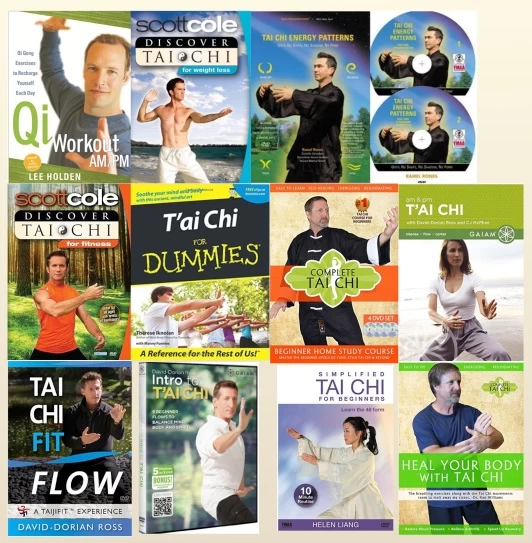Writer and Tai Chi expert Scott Meredith recently made this keen observation about Tai Chi marketing:

This graphic shows the unconscious cultural bias that affects internal training. What do all these have in common? Yeah – they show only upper body, arm gestures, or at least massively emphasize the upper body, arms, hands and heads, to the partial or complete exclusion of feet, legs, and hips…
Our profound entrancement with the upper body has made us all tense as hell up there. That’s one issue. The other issue is that, paradoxical as it may seem, the only way to get the real internal in the upper body (arms, hands, whatever) is by relentless internal conditioning of the lower body (feet, legs, hips).
All of that is true. Modern humans really are obsessed with their upper bodies. Our middle and upper class jobs are performed with hands and eyes, while the lower body is resting in a seated position. And even after forty to fifty hours of office work, leading to pathologically tight hip flexors and hamstrings, most of us would still prefer to skip leg day at the gym.
Lower body workouts are a tough sell. I myself have accidentally frightened away new students in the past, by demonstrating a low posture in an introductory Tai Chi class. As Scott implied, Westerners have been conditioned to expect a vibrant new level of health, as a result of adopting exotic Asian hand positions. To be confronted with the coarse reality of a low squat is a deeply dissonant experience.
Marketing professionals and cover designers know this, and respond to the desires of the marketplace.
It’s fun to make cynical observations about advertising. Nevertheless, let’s acknowledge that martial artists and marketers have a common goal: influencing others’ behavior with minimal cost and effort. Tai Chi fans ought to learn from the wisdom displayed by these ad packages. It’s not about excluding the waist and everything below. It’s about focusing on a human face.



 Introduction
Introduction


